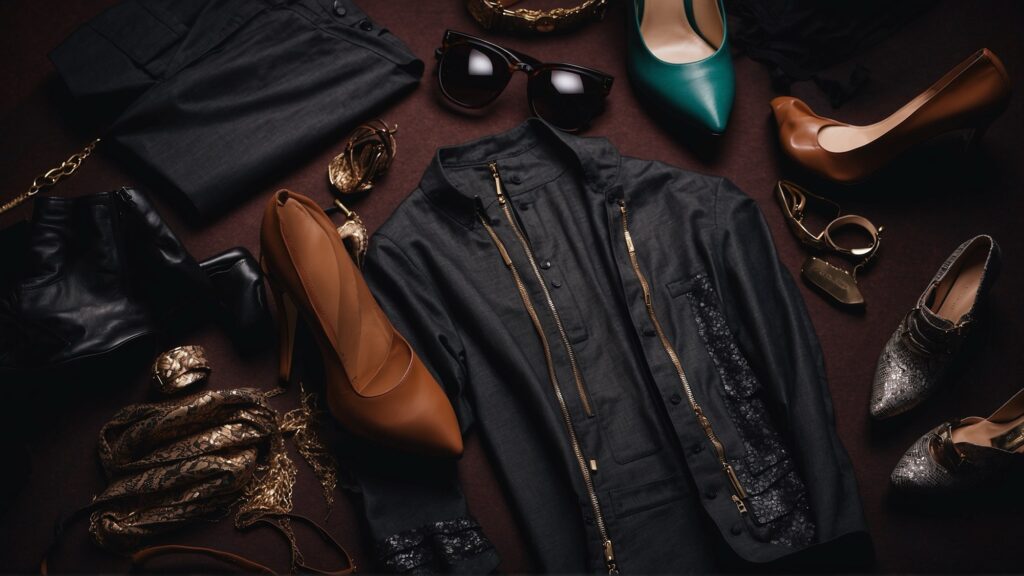Ever stood in front of your wardrobe, agonizing over what to wear for a night out in a new city? You’re not alone. Dress codes in European clubs can be as diverse as the continent itself, ranging from ultra-chic to laid-back casual. Here’s how to crack the code and ensure you’re not turned away at the door, doubling down on details and tips to ensure your outfit is spot-on.
Know the Venue Type

Begin by grasping the essence of the venue you’re eyeing. Upscale establishments in fashion capitals like Paris or Milan typically lean towards a refined, fashion-forward dress code—think smart casual with a dash of glamour. Conversely, the vibe in underground clubs in Berlin or Amsterdam might skew towards an eclectic or relaxed dress code, embracing individuality and comfort.
Understanding the venue’s atmosphere is pivotal. High-end clubs often seek a blend of contemporary fashion with a touch of sophistication, whereas alternative spaces might appreciate unique, expressive outfits. Consider the club’s location, reputation, and the crowd it attracts. A swanky rooftop bar in Monaco, for instance, might have different expectations than a laid-back beach club in Ibiza.
When in Rome (or Paris, or Berlin…)

Observing local fashion trends can provide invaluable guidance. While it’s not about cloning local styles, understanding the essence of regional fashion sensibilities can steer your choices in the right direction. For example, the relaxed, bohemian vibe of Barcelona’s nightlife might inspire a different wardrobe choice than the sleek, minimalist aesthetic prevalent in Scandinavian clubs.
Integrate local fashion elements into your outfit to blend in seamlessly. This might mean opting for designer pieces in fashion-centric cities or embracing vintage and indie outfits in more alternative locales. Paying homage to local style not only shows respect but also enhances your clubbing experience, making you feel part of the scene.
Smart Casual is Usually Safe

If uncertainty persists, defaulting to smart casual is a safe bet. This universally accepted dress code balances comfort with sophistication. Men might consider a tailored pair of chinos paired with a crisp button-down shirt, while women could opt for an elegant jumpsuit or a sleek blouse paired with tailored pants. The aim is to look polished yet understated, ready for a variety of social settings.
Elevate this look by paying attention to fit, fabric quality, and color coordination. A well-fitted ensemble in premium materials speaks volumes, projecting an image of effortlessness and poise. Neutral colors offer versatility, while a pop of color or a pattern can inject personality into your outfit.
Accessories Are Your Secret Weapon

Accessories possess the power to transform an outfit from mundane to memorable. A well-chosen piece, whether it’s a bold watch, an eye-catching pair of earrings, or a chic belt, can serve as a conversation starter and reflect your personal style. It’s the subtleties of these choices that can elevate your look, making you stand out in the best way possible.
Consider accessories as the finishing touches that complete your narrative. They’re the subtle cues that communicate your attention to detail and your understanding of the venue’s vibe. A tasteful selection of accessories can complement your outfit, adding layers of sophistication or fun, depending on the occasion.
Comfort Over Everything

While aesthetics are important, comfort should never be compromised. The ultimate goal of a night out is to have a fantastic time, and feeling comfortable in your outfit plays a significant role in that. Choose garments and footwear that allow you to move freely and enjoy the night without restrictions.
Invest in quality, well-fitted pieces that flatter your body type and enhance your movement. Opt for breathable fabrics if you’re heading to a crowded or warm venue. When it comes to footwear, look for stylish yet comfortable options that can withstand hours of dancing or standing.
Special Nights and Themes

Be vigilant for special theme nights or events, which may necessitate a departure from the usual dress code. These occasions offer a unique opportunity to experiment with your style and embrace different facets of your fashion sense. Whether it’s a glamorous white party, a nostalgic retro evening, or a playful costume event, dressing up according to the theme can significantly enhance your experience and ensure you’re in sync with the event’s atmosphere.
Immerse yourself in the theme, using it as a creative platform to express yourself. For instance, a 1920s Gatsby-themed party is an invitation to indulge in the opulence of sequined dresses or sharp tuxedos, while a 1980s night calls for vibrant colors, bold prints, and oversized accessories. Researching the era or theme can provide inspiration and guidance, helping you craft an authentic and striking look.
Always Have a Plan B
Despite thorough planning, the unpredictable nature of nightlife means it’s wise to have a backup plan. This could be as simple as carrying an additional accessory or outerwear option that can shift your look’s tone if necessary. An extra layer, for instance, can add sophistication to a casual outfit or offer practicality if the weather changes.
This foresight extends to footwear—consider packing a pair of foldable flats in your bag if heels become unbearable, ensuring your night isn’t cut short by discomfort. Additionally, having a versatile piece of clothing that can adapt to different social settings can be a lifesaver, should your plans evolve throughout the night.
Conclusion
Navigating the diverse dress codes of Europe’s vibrant nightlife doesn’t have to be daunting. By investing time in research, observing local fashion trends, and preparing for various scenarios, you can confidently curate outfits that are not only appropriate but also expressive of your personal style. Remember, while clothing can make a strong first impression, your attitude and how you carry yourself ultimately define your presence. Embrace confidence as your true statement piece, allowing it to guide you through the exhilarating experience of Europe’s club scene.

